Property Geek
We provide the actual and accurate information with unbiased user driven reviews to our viewers, to help them see the best and find the best!
View posts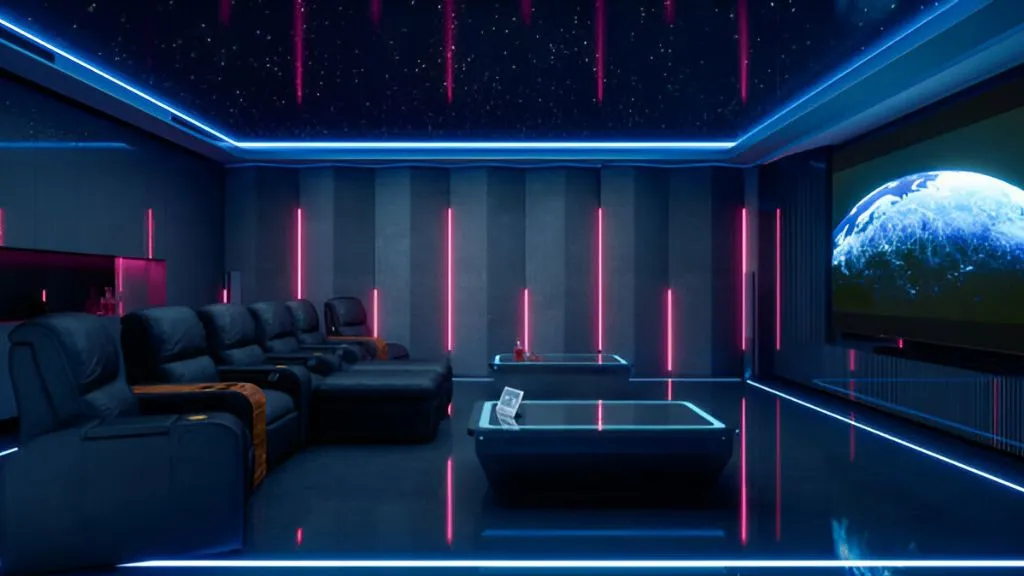
Why stand in long queues at a movie theatre, while you also deal with movie-goers who are pretty noisy? You can avoid all of this if you have a home theatre at your home, so enjoy the luxury of a movie theatre in your own home. If you want to design a home theatre in your room, trust us on this, your Saturday nights could not be more comfortable and fun than that.
People are likely to think that designing a home theatre is a challenging task, but in reality, it is so much easier than you think. You need to plan the set-up of your space and visit your favourite sites like Pinterest or Instagram to do adequate research. When you visit a reference site, you will get an idea about the sound systems and TVs available in the market, and choose the best interior design for your home.
However, we have done a compilation of an easy-breezy list of tips for designing a home theatre room that can help you to decorate your interior and get a perfect home design.
Home theatres are not as difficult to place as people might think, the big screen will indeed tempt you but you should also know the basic ways to design a home theatre. There are a few points that you have to consider when you decide on the home theatre’s designs.
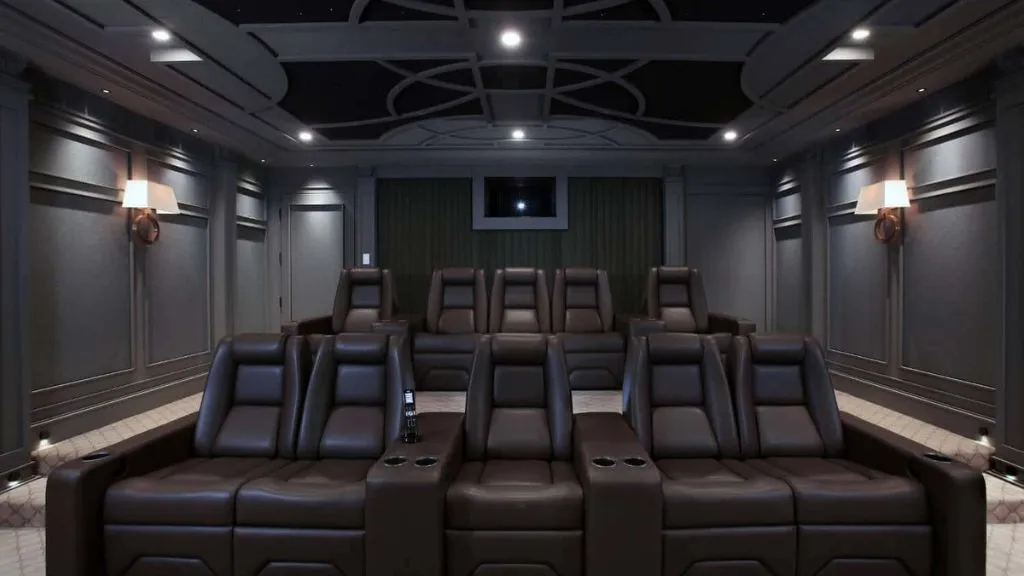
Before you start designing your home theater, it is crucial to select the room or space which you would want to convert to a home theater. Typically, family members prefer watching television in the living room or bedroom but all these rooms consist of windows. Now you must remember that windows allow sunlight to enter the room which dims the watching experience. Most of these windows are made of glass which reflects light and sound, so maybe watching ‘Psycho’ will not feel so horrific with all the sunlight seeping in!
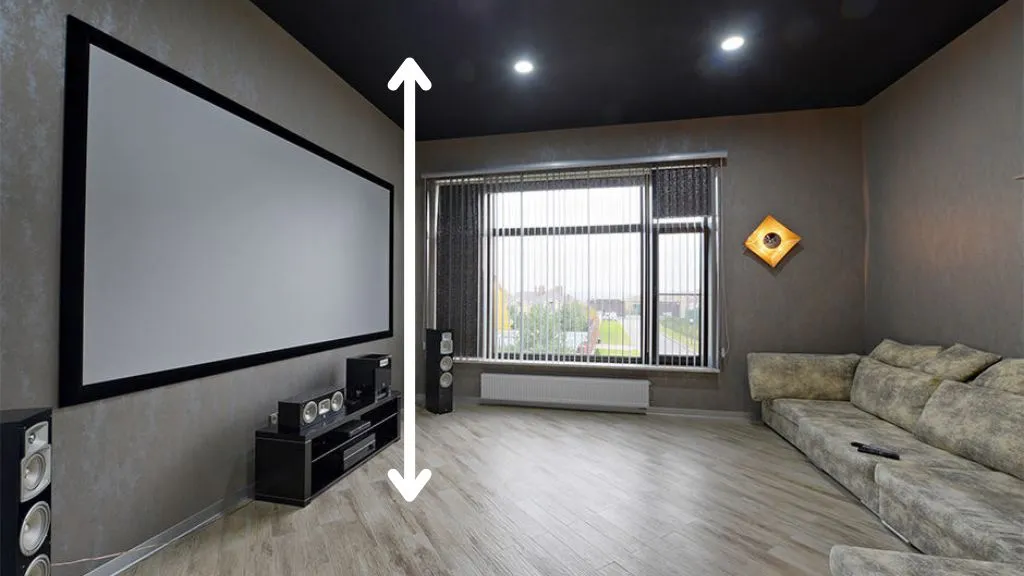
Generally, a room with high-ceiling can be excellent if you watch Khaleesi riding the enormous dragon in the show Game of Thrones but it is also okay if you want to set up the personal home theater in a space with a low ceiling like your basement. You can just go for a large LED TV over a projector and a screen.
After you are done with selecting the room for the home theater, it is time to use the super-useful equipment checklist of the theater to see whether or not you are ready with all the necessary devices to binge-watch the latest season of “Money Heist.” This checklist will include LCD and LED television, surround sound, a digital video recorder, an Internet connection for streaming the latest shows and movies, a Blu-ray DVD player, cable, and several other things.
You must have been tempted into buying a high-quality surround sound system as well as a good-quality (AVR) video/audio receiver, but we recommend to contrast and compare various brands before you shelve more money. Just saying, if a surround sound looks like a great idea for the surface, however, you will have to spend on pricey wireless speakers or wires for lining speakers under your plush carpet. For such a scenario, go for any subwoofer that is budget-friendly as that will be a wise purchase for you.
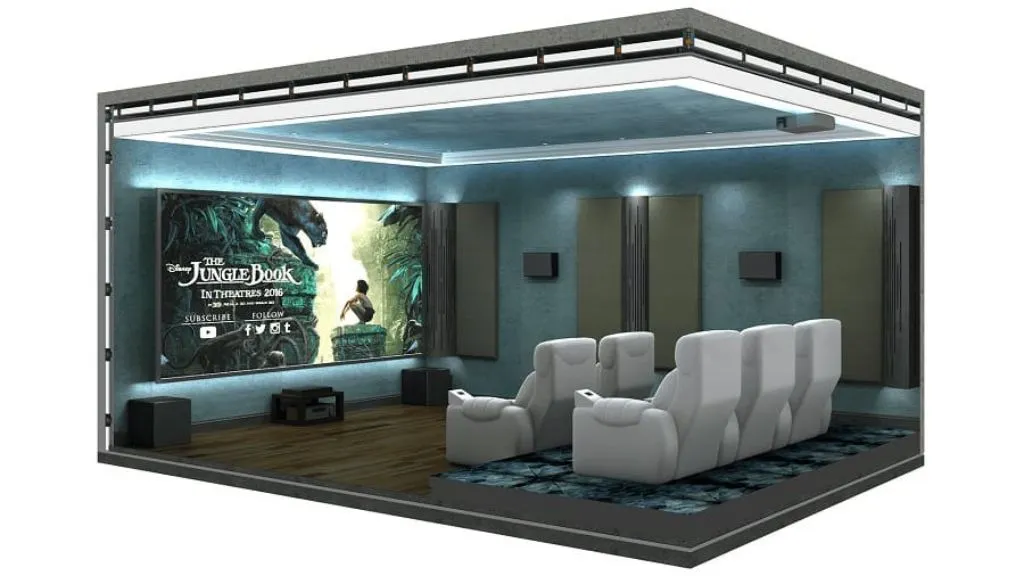
We are pretty sure no one is comfortable with the neighbours complaining frequently about the noise or your child waking up while you binge on the new episode of “The Walking Dead” during the night. Hence, it is very important to soundproof the home theatre, meaning to get acoustic panels installed on the wall which will block the noise. Also, remember to carpet the room, that is all the walls will kick back the sound and you will enjoy viewing that is disruption-free. So enjoy your favourite comedy movie to the fullest, without any interruption.
Moreover, the specialty of having home theatres is to get a movie-like experience in the comfort of your home. This feeling is because of the sound, so make sure the layout of the interior gives a good audio experience.

The furniture or other elements in the house can never enrich the viewing experience, however, what can is a good setup of the home theatre. All you need to do is place the home theatre at an ideal range of distance from the seats because if the plasma is very close to the seats, you will start seeing the pixels. If the home theatre is very far, you may have to squint in order to watch or even miss out on some fine details of the movie.
So our advice and the thumb rule is to place the TV at a distance of 1.5 to 2 metres diagonal to the width of your screen. For instance, if you are having a 48-inch LED TV you must ideally place the seating at a distance of 8 feet (96 inches) from your screen.
At the same time, you must remember that there are several retail stores that have bright lighting which may trick you, and you may think that a certain home theatre is giving you a clearer picture. In this case, you can go for Plasma TVs as they are better but the store lighting makes the quality seem a bit dull. So do not just rely on a salesperson who is trying to reach his target, but rather check various home theatres online, and visit the official websites of the brands to get a better idea.
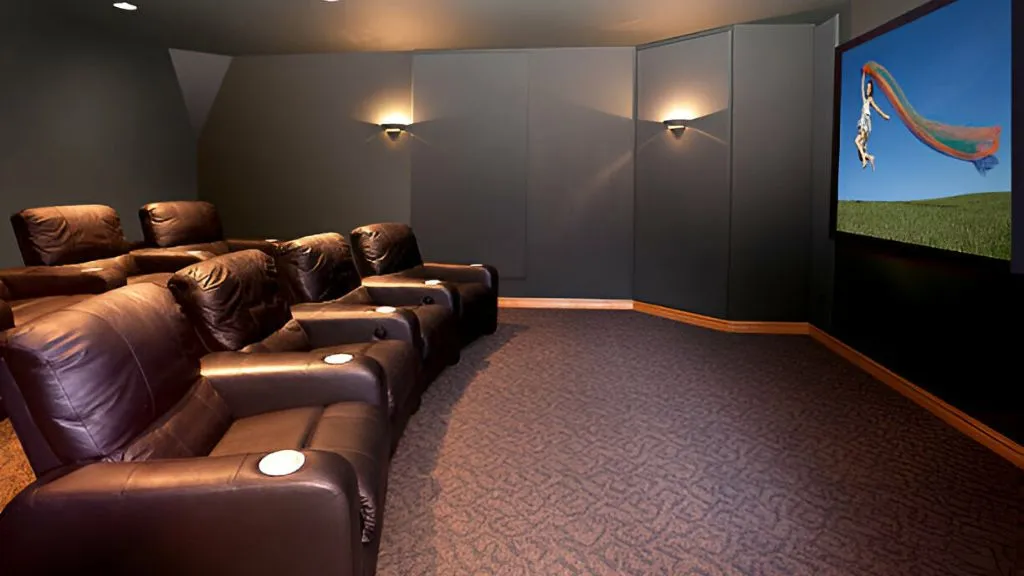
When we talk about the benefits of watching cinema on a large screen, it is not just experiencing the magnificent aura of the movie or the performance of the actors. It is watching cinema come into life on the extra-large screen, and the oversized recliner while you enjoy all of these at the comfort of your room. Investing in a 3, 6, or 9-seater recliner that has a metallic cup holder as well as storage space, where you can keep books and magazines, will refine your 360-degree watching experience. Let us face the fact that no one likes to watch a movie in a home theater sitting on a sturdy chair.
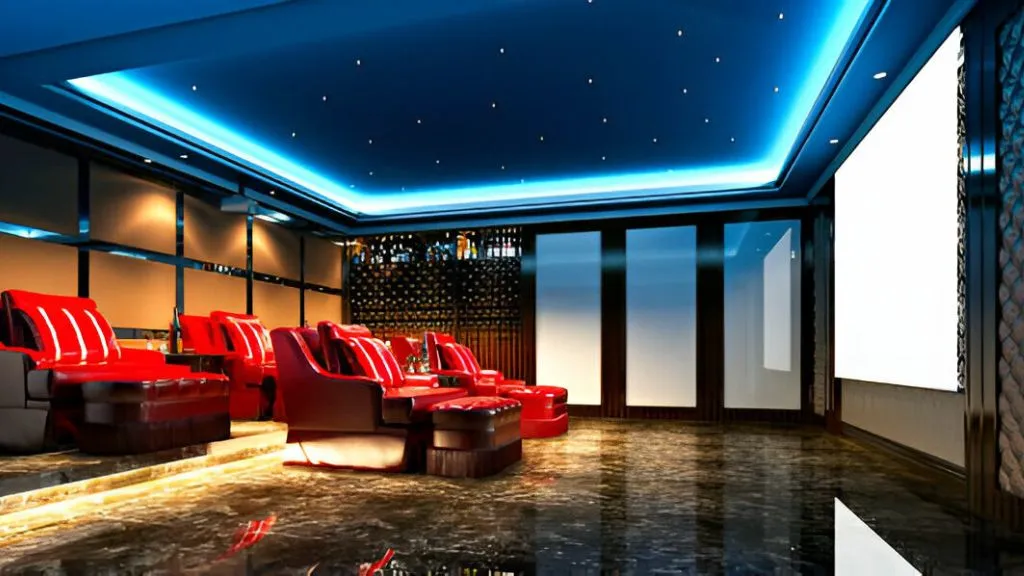
As we have mentioned earlier, glass windows are definitely a no-no as they reflect light and sound, instead of absorbing it. It is likely for you to get tempted by a fancy piece of framed glass window but avoid doing that. Even if you have best speakers the sound will echo in the space, and if the audio is not great you will not enjoy the video too.
Even if you have windows in the space where you have placed the theatre, you need to cover them completely. Well, you may of course use curtains or drapes for blocking the sunlight, but again you need to open and close the windows every time. A long-term solution is to blackout the windows.
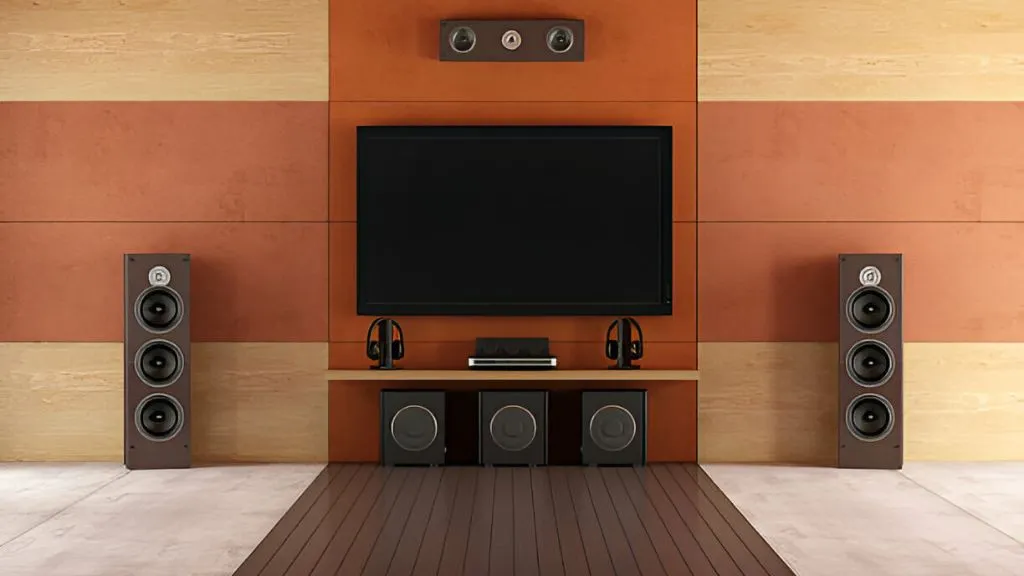
You may want to paint the walls of your interior in red or a bit of yellow for making your home theatre room more lively. While a perfect home typically has bright colours and it even lights up the room’s atmosphere, it has nothing to do with your viewing experience. If your home has bright colours it will reflect light which will cause a distraction in the watching experience of the movie. You can rather go for neutral colours like different shades of brown, cream, yellow, or even purple which looks quite trendy.
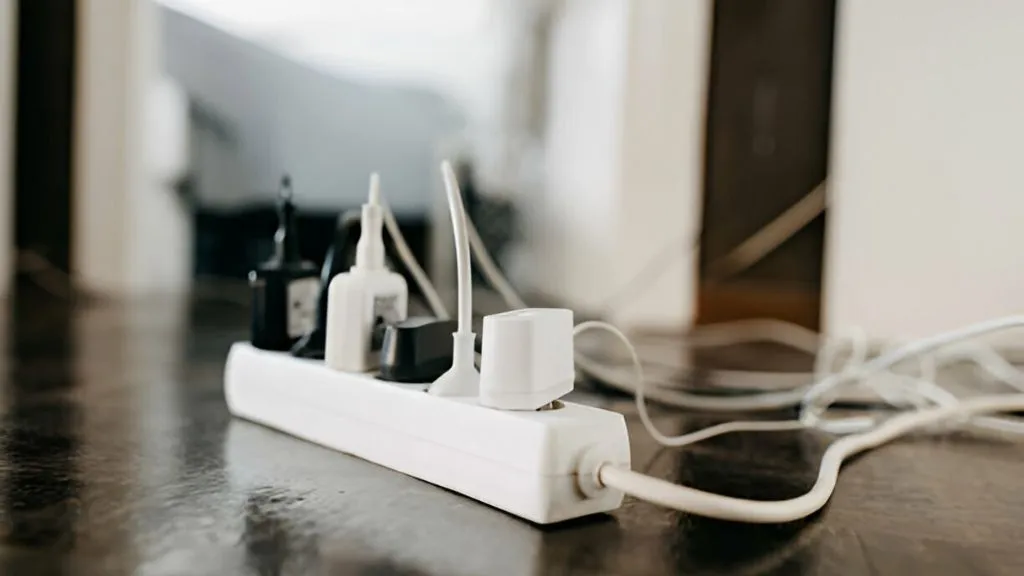
It is important for you to purchase a surge protector which is of high quality. These devices are really useful and will protect the home theatre from electrical surges and spikes. For instance, if you have a lot of electronic devices already fitted in your home interior. But if your electric current experiences a spike or there is a power outage in your home suddenly it may destroy the surround sound, TV, or a home projector. So if a home is not fitted with surge protection systems, it is time to find a surge protector for the home theatre.
Surge protector systems tend to block the extra electric current, and they send the electric current to the ground. One thing that you must keep in your mind is the standards as well as the joules, these are some things you must consider while buying one. One last thing to remember is that power strips do not work as surge protectors.

Last but not the least, you can use the remote control from Logitech Harmony that will help you to control every device in the home theatre. It is absolutely not a great idea to have four to five different remotes when just one can work perfectly well. Another option could be to create a connection with the laptop or phone, you can also try voice control for activating or deactivating the devices.
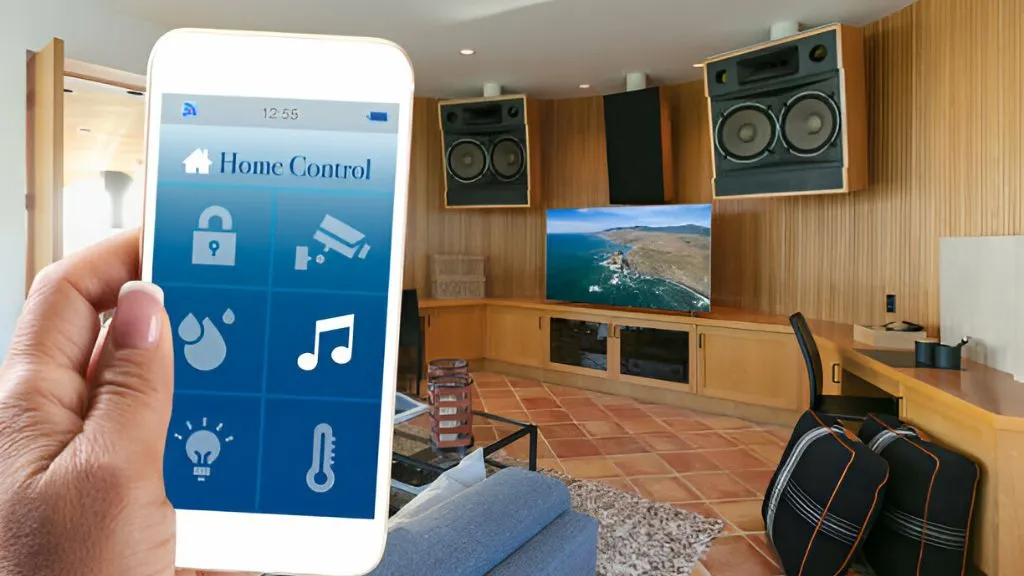
We live in a time when streaming movies and shows via Amazon Prime, Hulu, Netflix, and HBO Go has become the norm, so you can invest in a wireless network service that is strong and will work well in the future too. Wi-Fi service can help you to connect the laptop or mobile to the home theatre system and you can easily watch the latest episodes of ’13 Reasons Why’ or rewatch ‘Friends’.
After you convert your room into a home theatre and enjoy the amazing video quality, it is time for you to customise your home theatre room. Add some cool placards, a mini-bar, trendy lighting, a few pieces of furniture, or nifty elements, you may look for tips to design your home theatre system on various sites. Last but not the least, take some time out to plan, research, and handpick the pieces of furniture or devices that you want to keep with your home theatre. Invest some time and when you will see the end result you will definitely feel that all the waiting and planning was worth it.
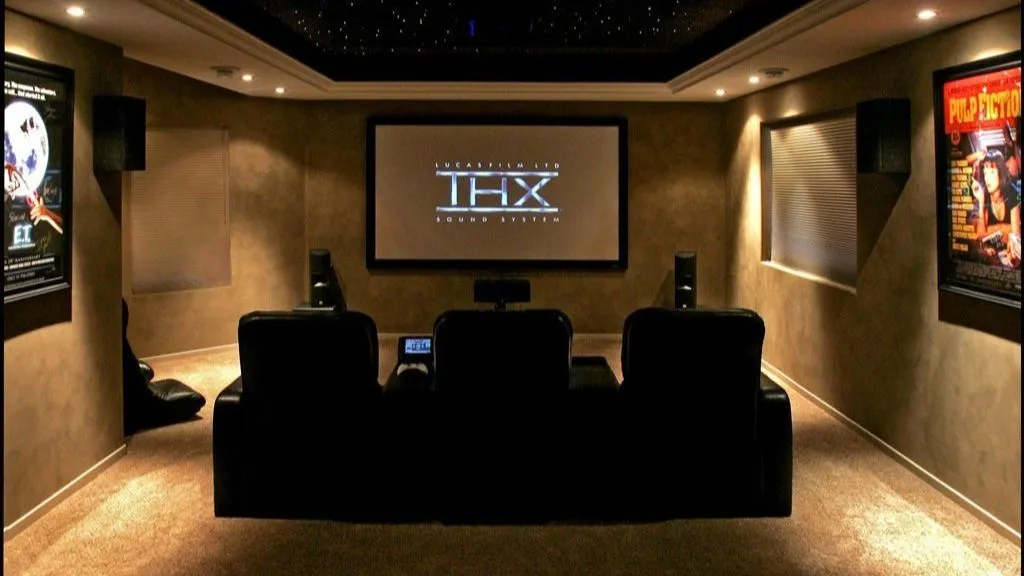
Acoustics refers to the way sound behaves in a particular space. In a home theatre, good acoustics are essential for ensuring that the audio sounds clear and balanced. Poor acoustics can cause echo, reverberation, and other distortions that can negatively impact the audio quality.
There are several factors that can affect the acoustics of a home theatre, such as the size and shape of the room, the materials used in the construction of the room, and the presence of hard surfaces like windows and doors.
To improve the acoustics of a home theatre, you can consider installing sound-absorbing materials on the walls, ceiling, and floor. These materials can include items like thick carpets, heavy curtains, and acoustic panels. You can also use bass traps and other specialised acoustic treatments to improve sound quality.
In addition to using sound-absorbing materials, you can also optimise the layout of the room to improve the acoustics. This may include arranging the seating and speakers in a way that minimises echo and maximises the audio quality.
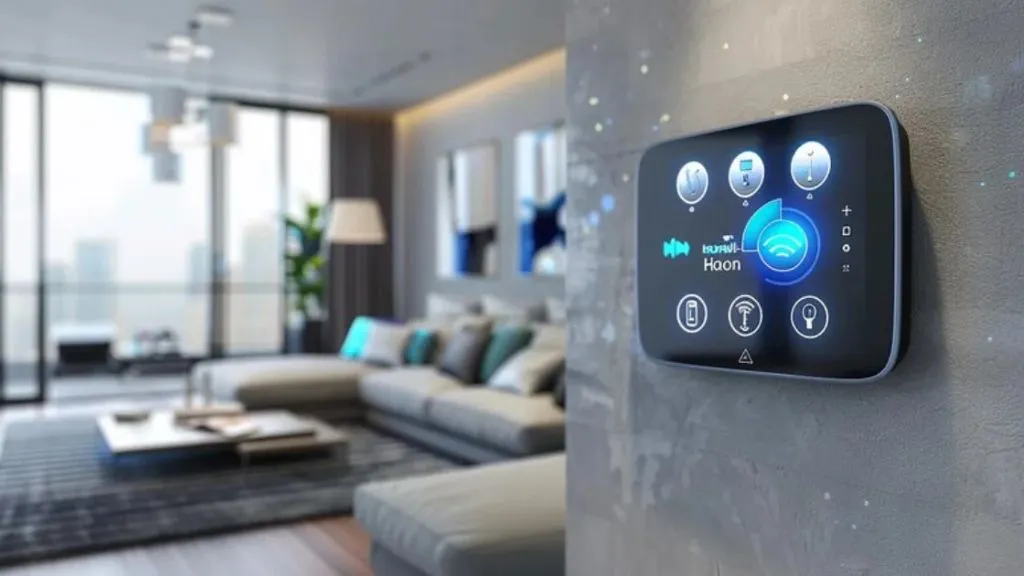
Temperature and humidity control is important in a home theatre because the comfort of the viewers and the performance of the equipment can be affected by extreme temperatures and high humidity levels.
If the room is too hot or humid, viewers may become uncomfortable, which can ruin their movie-watching experience. In addition, high humidity levels can cause problems with the audio and visual equipment, such as condensation forming on lenses or inside electronic components.
To maintain a comfortable temperature and humidity level in a home theatre, you can consider installing a climate control system. This can be a standalone air conditioning unit or a whole-house system that can be controlled through a thermostat.
If you live in an area with a moderate climate, you may be able to rely on natural ventilation to control the temperature and humidity in the home theatre. This could include installing windows or vents that can be opened to allow fresh air to circulate in the room.
It’s also a good idea to keep the room well-ventilated to help prevent the buildup of moisture and reduce the risk of damage to the equipment. This may involve installing exhaust fans or using dehumidifiers to remove excess moisture from the air.
We hope that the article will help you to design your home theater the way you like, our advice to you is that there are no rules for designing the interior of the home theater room. You can design it in whatever way you like, just remember to work on the lighting, the sound, and the layout of the house. Now that you know how to design the perfect home theater room, make a checklist and start working towards it.